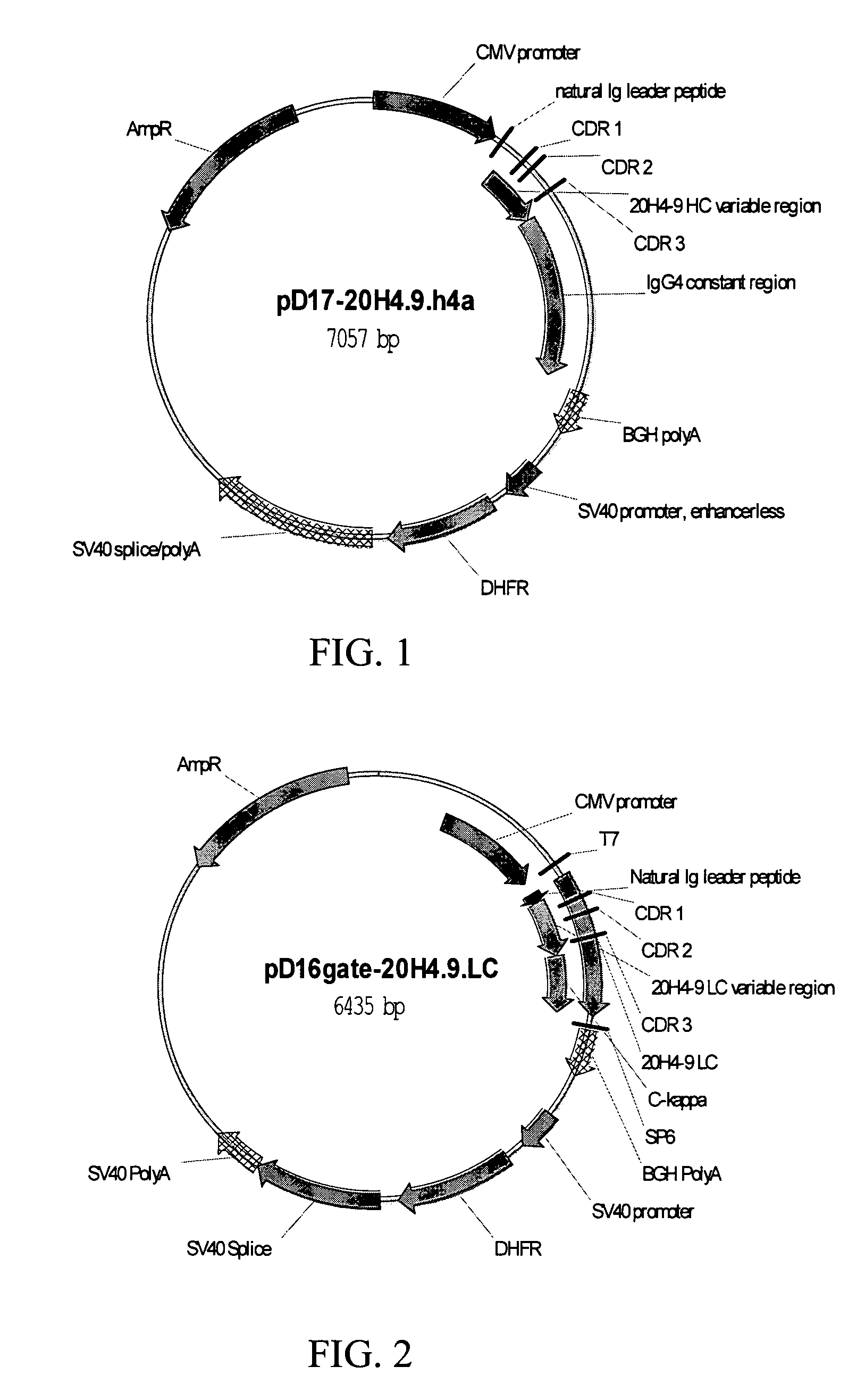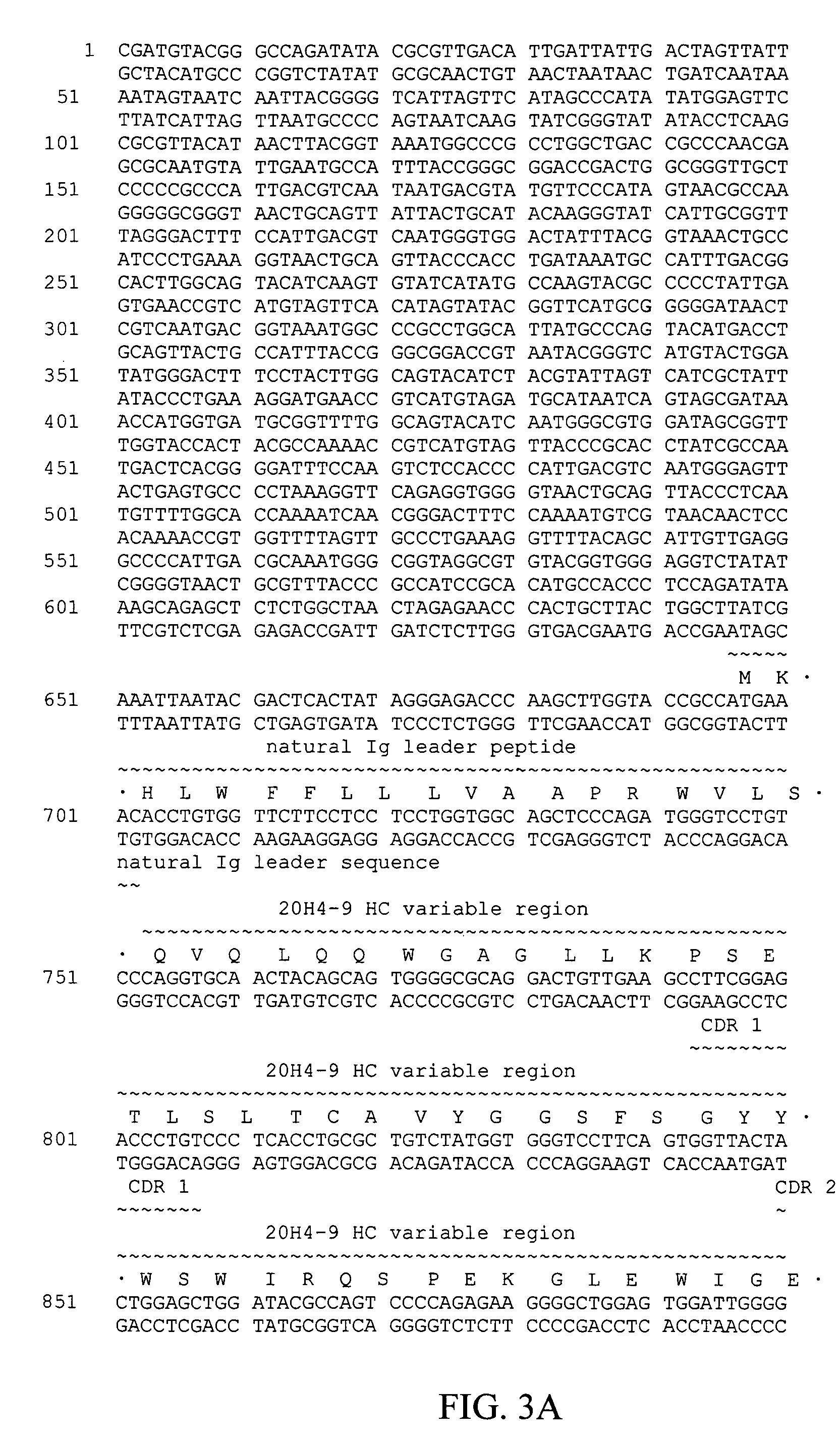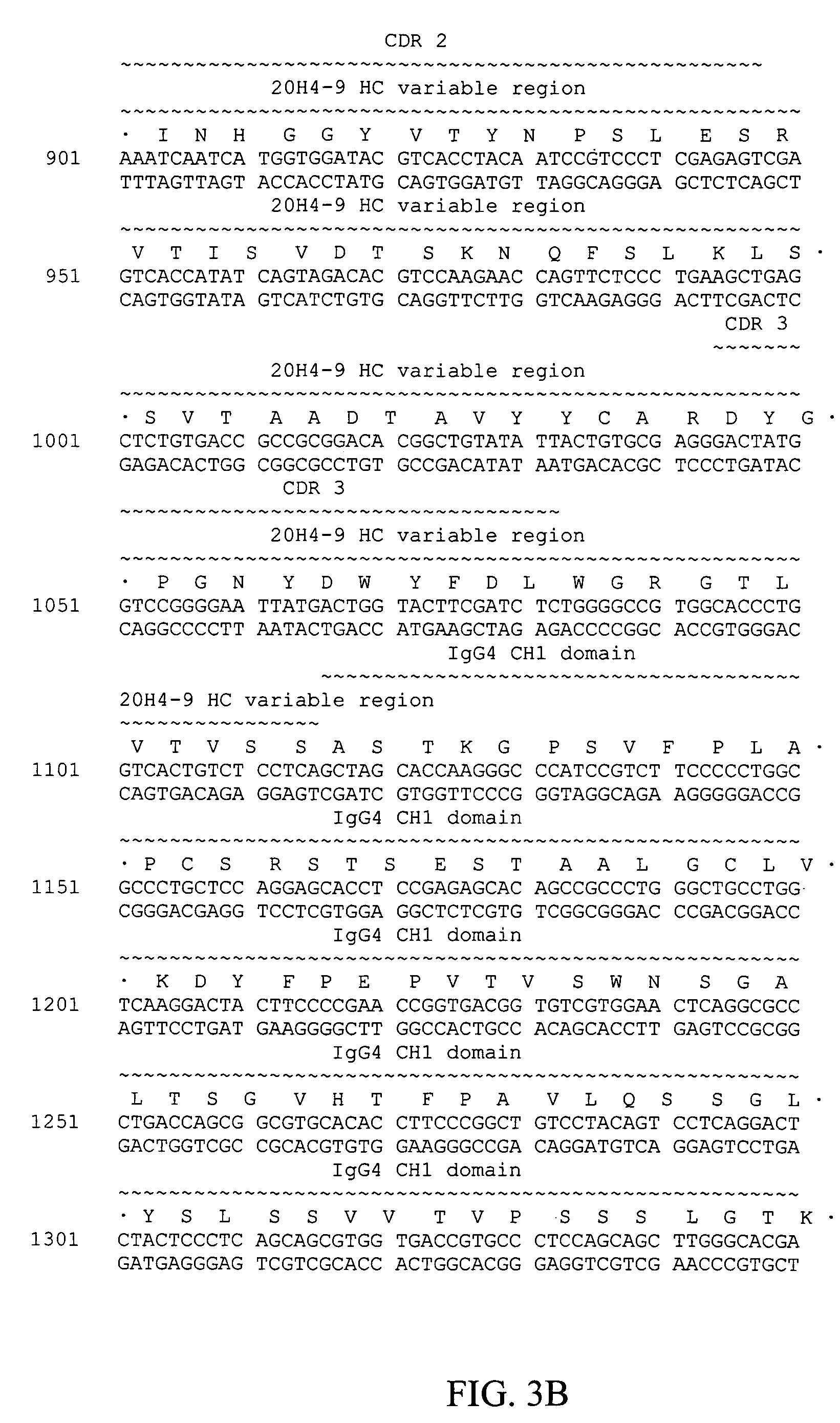Fully human antibodies against human 4-1BB
a technology of human antibodies and human 4-1bb, applied in the field of human antibodies, can solve the problems of insufficient recognition of an antigen by a naive t-cell, insufficient in itself to trigger t-cell activation, and the inability of cancer immunotherapy to effectively eliminate tumor cells, etc., to achieve the effect of enhancing the immune respons
- Summary
- Abstract
- Description
- Claims
- Application Information
AI Technical Summary
Benefits of technology
Problems solved by technology
Method used
Image
Examples
example 1
Generation of Antibodies
Materials and Methods
[0071]Fully human monoclonal antibodies to the human CD137 (4-1BB) receptor were generated in the HuMAb-Mouse® (Medarex, Inc., Princeton, N.J.). HuMAb mice were immunized five times intraperitoneally (i.p.) and subcutaneously (s.c.) with 25 μg of the extracellular domain of human CD137 in RIBI adjuvant (Ribi Immunochemical). Prior to fusion, mice were boosted intravenously (i.v.) with the same amount of antigen. Spleen cells from immunized mice with adequate titers of antibodies to huCD137 were fused to mouse myeloma cells following standard procedures.
[0072]Anti-human CD3 mab (clone:HIT3a), ELISA kits for human and monkey IFN-γ, cytometric bead array (CBA) kits, and all conjugated antibodies for flow cytometry were purchased from BD Pharmingen (San Diego, Calif.). Human IgG1 λ and Human IgG1 κ were purchased from Sigma-Aldrich (St. Louis, Mo.). CEM cells (ATCC-CRL 2265) were purchased from ATCC. Culture media (RPMI), and fetal bovine ser...
example 2
In vitro Characterization of mab 20H4.9-IgG4
[0088]Based on its binding kinetics, inability to block CD137-CD137L interaction, and functional effects on human T-cells, mab 20H4.9-IgG1 was selected for switching to an IgG4 form. The IgG4 form of mab 20H4.9-IgG1 is 20H4.9-IgG4 (depicted in FIGS. 3 and 4).
[0089]The second phase of these studies involved the comparison of the in vitro properties of mab 20H4.9-IgG4 and mab 20H4.9-IgG1. In this section, the binding kinetic properties, and functional effects of both antibodies in human and monkey lymphocytes are described.
[0090]Binding Kinetics
[0091]Kinetic properties of anti-human CD137 antibodies were evaluated by surface plasmon resonance using a BIAcore 3000 instrument. The antigen, human CD137-murine IgG2a, was immobilized covalently at a low density on the surface of a CM5 sensorchip. Mab 20H4.9-IgG4 and mab 20H4.9-IgG1 were injected at concentrations between 25 and 200 nM. FIG. 11 depicts injections at 100 nM for both mab 20H4.9-IgG...
example 3
In vivo Evaluation of 4-1BB Antibodies in a Pharmacodynamic Model in Cynomolgus Monkeys
[0098]This example illustrates the ability of mab 20H4.9-IgG4 and mab hu39E3.G4 to enhance the antigen specific immune response elicited by DNA vaccines.
Materials and Methods
[0099]Experimental animal groups: Female and male cynomolgus monkeys (2.5 to 5.0 kg) were purchased from Charles River BRF (Houston, Tex.) for this study and were housed in pairs. Each experimental group consisted of 4 males and 2 females which were randomized into groups by body weight. Experimental groups were as follows:[0100]Group 1—SIV gag and PSA DNA vaccine (2 mg each), day 0, 28, 56, i.m., plus saline control, i.v., on days 12, 15 and 19;[0101]Group 2—SIV gag and PSA DNA vaccine (2 mg each), day 0, 28, 56, i.m., plus mab hu39E3.G4, i.v., on days 12, 15 and 19;[0102]Group 3—SIV gag and PSA DNA vaccine (2 mg each), day 0, 28, 56, i.m., plus mab 20H4.9-IgG4, i.v., on days 12, 15 and 19;[0103]Group 4—untreated control grou...
PUM
| Property | Measurement | Unit |
|---|---|---|
| concentrations | aaaaa | aaaaa |
| temperature | aaaaa | aaaaa |
| concentration | aaaaa | aaaaa |
Abstract
Description
Claims
Application Information
 Login to View More
Login to View More - R&D
- Intellectual Property
- Life Sciences
- Materials
- Tech Scout
- Unparalleled Data Quality
- Higher Quality Content
- 60% Fewer Hallucinations
Browse by: Latest US Patents, China's latest patents, Technical Efficacy Thesaurus, Application Domain, Technology Topic, Popular Technical Reports.
© 2025 PatSnap. All rights reserved.Legal|Privacy policy|Modern Slavery Act Transparency Statement|Sitemap|About US| Contact US: help@patsnap.com



